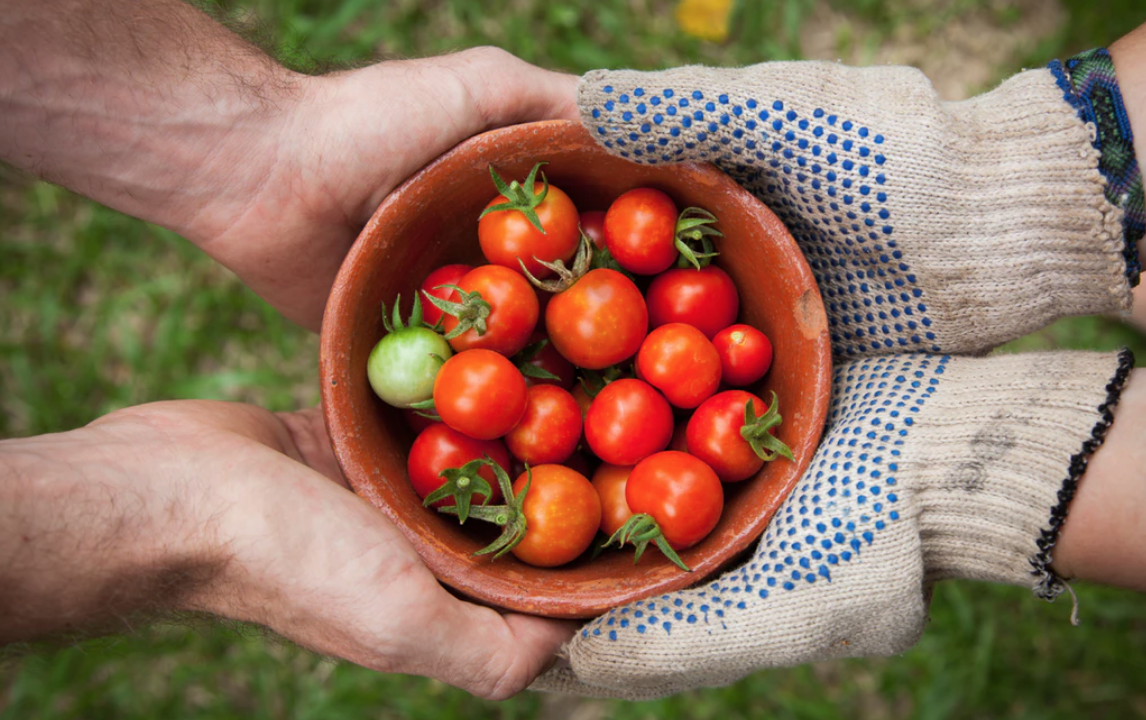Sustainability July 3, 2018
Growing your own food can be really simple and rewarding.


Imagine going outside to a picturesque home garden and harvesting beautiful fresh produce for a divine meal. Growing your own food is actually pretty simple. You can reap the benefits of healthy cheap food, all the while practicing sustainability.
Here are five easy ways to cultivate a home garden and grow your own food.
When growing a home garden, one of the most important aspects is the location. Is there enough sun? Is there too much sun? These are two questions to keep in mind while picking your plot.
According to the Old Farmer’s Almanac, each day plants need about six hours of sunlight. The more time that your produce spends in the sun, the more likely it will come out tasty and plentiful. Make sure to cultivate your garden in a space that is stable. Right next to your rain gutter might seem like the perfect location for your home garden, but the possible flooding from the rain could pose some problems.
Bigger isn’t necessarily better. You may have huge aspirations to make a garden that spans an acre, but as far as your first home garden goes, that’s a bit unrealistic. A smaller space is easier to take care of. It will cause you less stress and be more manageable.
There are so many options when it comes to choosing which produce to plant. HGTV talks about growing a garden that has all the ingredients to make a pizza–at least all of the toppings. Some of the vegetables to plant are tomatoes, bell peppers and basil. The article even goes so far to shape the garden itself like a pizza.
Back To The Roots creates simple ways for you to create your own garden and grow your own food. One of the DIY garden kits they offer is a self-cleaning fish tank that also grows plants. It works through a simple aquaponics system. Basically, the waste produced by the fish fertilizes the produce. In turn, the plant cleans the water in the fish tank.
Soil is the base layer for your home garden. It is key in producing quality produce for you to consume. One of the qualities of good soil, according to Planet Natural Research Center, is plenty of humus. Now, this does not mean that your dirt needs a delectable dip to grow your veggies–that’s hummus. Humus, on the other hand, is an organic product that comes from animal or plant waste. It helps to drain excess moisture and keeps the soil light and airy.
There are some negative qualities to look out for when it comes to finding good soil. One of them is the texture of the dirt itself. Stay away from sandy soils. This will feel gritty to touch. Another soil type to steer clear of are ones that are rich with clay. Clay feels silky when wet but crunchy when dry. Soil like this tends to have trouble draining excess water; therefore, it is not ideal for your home garden.
If you are looking for the freshest produce possible, different vegetables require specialized attention. Better Homes & Gardens gives serval hints on how to harvest various vegetables. For example, you will know that your carrots are ready when the leaves are dark green and part of the carrot sticks up about one inch.
Peas are best when they are picked a couple of days early. This keeps them from tasting way too starchy instead of sweet. When is comes to salad greens, they grow back after you cut them. So, once the leaves reach about four inches, they are ready for harvesting.
So, you’ve successfully planted, grown and harvested your beautiful produce. Now what are you supposed to do? The obvious is that you should probably treat yourself to a nice meal, delighting in the fruits of you labor.
There is also some upkeep that goes into you home garden in order to make sure it’s good for the next planting season. A tip from Real Simple is to keep a gardening calendar to track your growing season. Make sure to fertilize your garden every six to eight weeks in the growing season. Try not to over water, but water just enough.
Growing your own food with an at home garden is not as complicated as it might seem. There are many benefits to having fresh organic produce at your fingertips. Most importantly, remain patient. Having your own garden takes work, but by sticking with it, you’ll end up with great result.